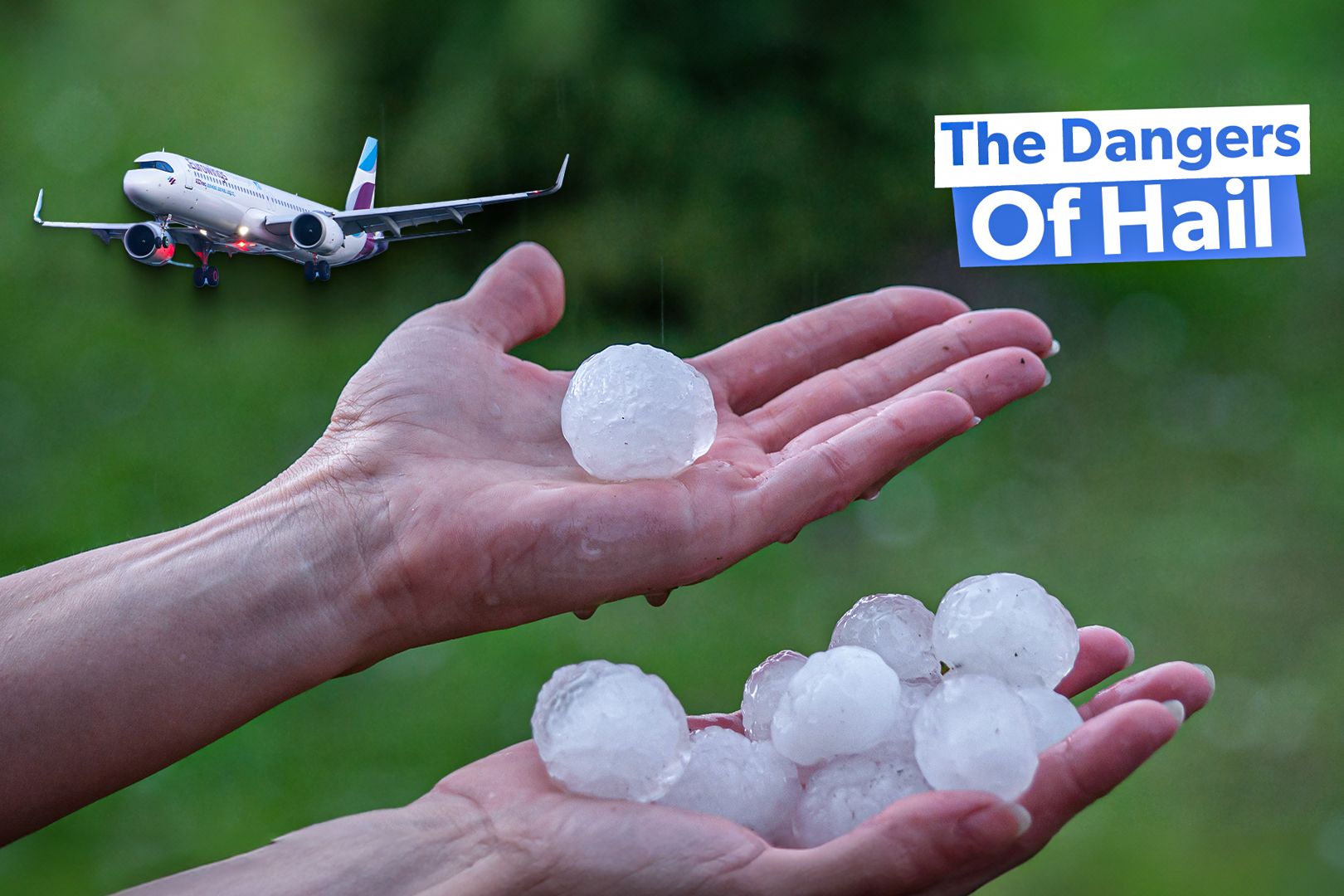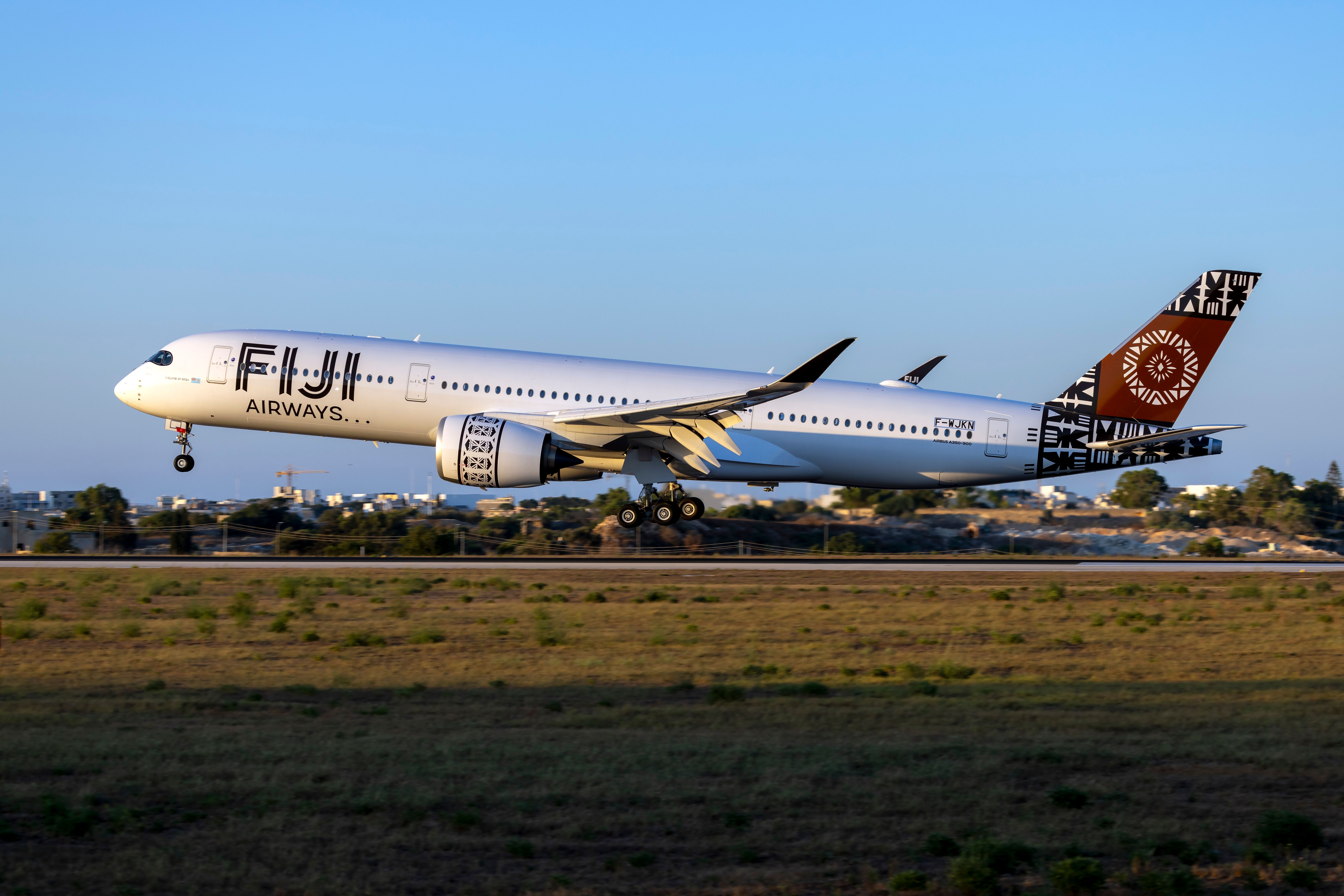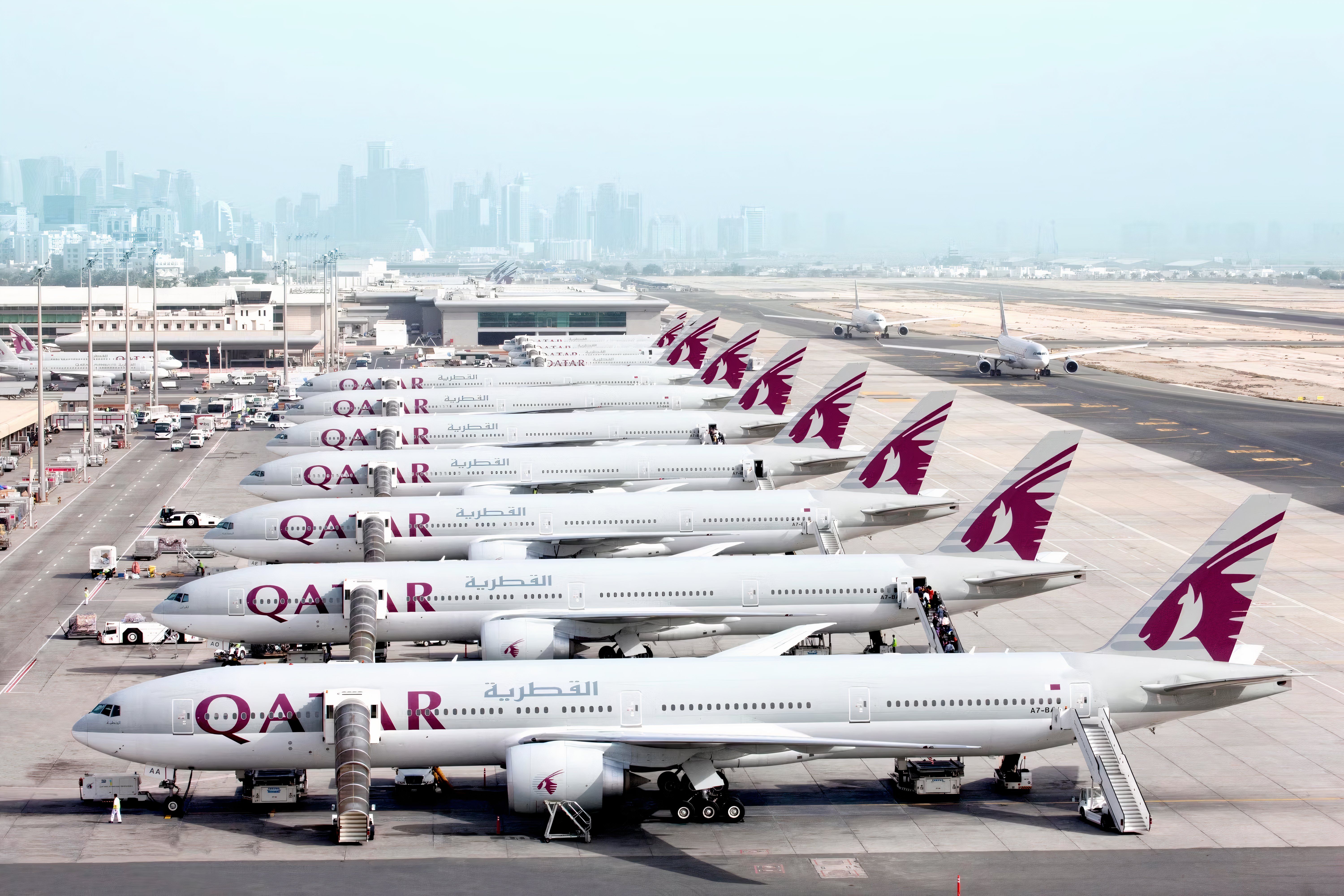Summary Hail poses severe safety risks by damaging windshields and hindering visibility for pilots. Radomes can be destroyed by hail, impacting radar capabilities and leading to subsequent issues. Hail causes extensive structural damage to aircraft, compromising aerodynamics and systems.
Hailstorms are more than just a minor inconvenience for aircraft; they represent significant hazards that can compromise safety, cause costly damage, and disrupt operations. Here are five key reasons hail poses such a danger to aircraft and a deeper understanding of hail as a weather event. There have been no reports of injuries onboard.

Understanding hail as a weather phenomenon Hail forms in the updrafts of powerful thunderstorms, particularly within Cumulonimbus clouds, where water droplets are repeatedly lifted into colder regions of the atmosphere. As these droplets freeze and accumulate additional layers of ice, they eventually grow too heavy for the updrafts to support and fall to the ground as hailstones. These ice pellets can range in size from small grains to large stones comparable to golf balls, or even larger in extreme cases.
The hailstones' size and density depend on the updrafts' strength and the duration of their suspension within the cloud. From a meteorological perspective, hailstorms are typically associated with severe weather systems that can produce other dangerous conditions, such as tornadoes and high winds. The unpredictability of hailstorms makes them particularly dangerous for aircraft.
While weather radar can detect liquid precipitation, hail may not always appear prominently on radar, complicating avoidance strategies for pilots. 1 Windshield damage Hail can crack or shatter aircraft windshields, posing a critical safety risk. These windshields, often comprising multiple layers with an outer ply designed to bear the brunt of impacts, are essential for pilot visibility and structural integrity.
In severe hailstorms, windshields can shatter within seconds, making it impossible for pilots to see and navigate safely. The potential for such damage requires immediate responses, often leading to emergency landings, as was the case for Austrian Airlines flight OS434 , an Airbus A320 en route from Palma de Mallorca to Vienna. The severity of this risk is compounded by the fact that windshields are also crucial for protecting the cockpit from sudden depressurization.
Even damage to just the outer layer of the windshield can impede visibility and affect the structural integrity of the aircraft, often necessitating painstakingly time-consuming and extensive repairs to return the aircraft to service. 2 Radome destruction The radome, located at the nose of the aircraft, is particularly vulnerable to hail due to its thin metal construction, designed to protect radar equipment without obstructing radar signals. Hail damage to the radome can have cascading effects, including the loss of radar capabilities, which are essential for detecting and avoiding subsequent severe weather conditions.
Without accurate weather radar information, the pilots are effectively "flying blind," unable to anticipate or steer clear of additional hazards such as turbulence, lightning, or more hail. Moreover, the destruction of the radome (while not a catastrophic loss in and of itself) can lead to secondary damage within the aircraft. As the radome shatters, debris can potentially be ingested by the engines or strike other critical components, making the overall situation worse.
In the Austrian Airlines incident, the radome was severely damaged, rendering the aircraft's radar inoperative and forcing the crew to rely on their training and instincts to safely land the aircraft instead. 3 Structural damage to the aircraft Hail can cause extensive damage to the aircraft's fuselage, wings, and other structural components. The leading edges of the wings, along with antennas, probes, and other protruding elements, are particularly susceptible to impact damage.
This can result in dents, cracks, and even breaches in the aircraft's outer skin, disrupting the aerodynamics and leading to secondary mechanical failures. The structural integrity of the aircraft is paramount to its safe operation, and hail damage can compromise this in multiple ways. For instance, damage to the leading edges of the wings can alter the airflow, reducing lift and increasing drag.
Additionally, hail can damage or dislodge vital sensors and probes, leading to inaccurate readings and potentially triggering erroneous system responses. This was highlighted in the Airbus Safety Magazine , where a fly-by-wire aircraft experienced severe operational disruptions due to hail damage to its probes, leading to unreliable airspeed readings and the loss of several automated flight systems. Systems responded as follows: F/CTL NAV ADR DISAGREE was triggered Electrical Flight Controls Systems reverted to alternate law Autopilot and auto thrust disengaged Flight directors were no longer available All these effects resulted from the unreliable airspeed flight conditions, which the crew had to manage as per ECAM.
An emergency landing was performed in the following adverse conditions: No autoland capability No ILS guidance No visibility through the front windshield According to Airbus, the crew managed to land solely using visual references obtained through the lateral cockpit windows. 4 Engine damage Though rare, hail ingestion has the potential to lead to an engine flame-out. This is a uniquely dangerous situation where the engine loses power due to the combustion chamber's inability to maintain the necessary conditions for combustion.
Aircraft engines are rigorously tested to withstand various impacts, including bird strikes, but hail can still pose a significant threat, particularly if large amounts are ingested at high speeds. Keep in mind that engines are designed with protective cowling and advanced materials to try and mitigate the impact of foreign object ingestion. However, hail, especially in large quantities, can overwhelm these defenses, leading to catastrophic engine failure.
The potential for such damage necessitates regular inspections and maintenance, particularly after flights through known or suspected hail storms. While modern engines are remarkably resilient, the risk remains, as even a brief encounter with hail can have devastating consequences. 5 Operational disruptions and increased maintenance costs Beyond the immediate safety risks, hail damage can lead to significant operational disruptions for airlines.
Aircraft may be grounded for repairs, leading to canceled flights and delays. The recent incident with WestJet , where 16 Boeing 737s were damaged in a Calgary hailstorm, illustrates the scale of disruption that hail can cause. Each aircraft had to undergo detailed inspections and repairs, which can be both time-consuming and expensive.
The airline will continue to cancel flights as a sizable chunk of its fleet remains grounded. Assessing hail damage requires precise, painstaking inspections, often using advanced 3D scanning technologies to ensure all damage is identified and repaired. These technologies, such as those provided by Creaform , help maintenance teams capture detailed geometric measurements of every dent and crack, ensuring thorough repairs and minimizing human error or oversights.
This process, while effective, adds to the overall cost and complexity of maintaining an aircraft fleet in hail-prone regions. Hail is a threat to aviation Hailstorms remain a significant threat to aviation, with the potential to cause severe damage to aircraft, disrupt operations, and endanger lives. As climate change increases the frequency and intensity of extreme weather events, the aviation industry must continue to advance its technologies and strategies to mitigate these risks.
Understanding the dangers posed by hail and taking proactive measures to avoid or minimize its impact is the ante for maintaining safety in the skies..



















